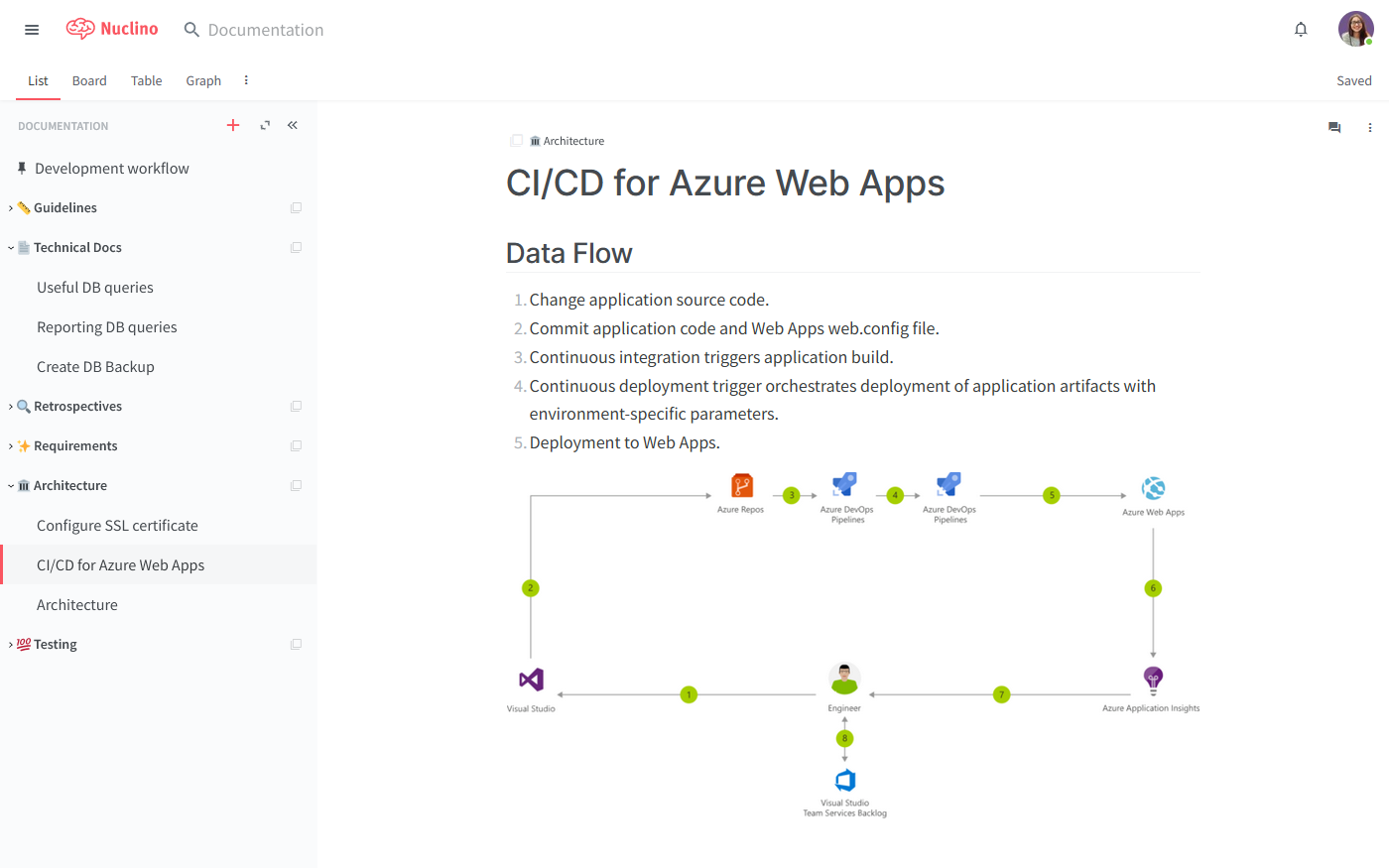

Akshat Virmani
6 min readSep 15 2024
Leading Low-Code Documentation Tools for Technical Writers
Did you miss our guide on open-source documentation platforms? In that article, we discussed a range of documentation tools, but many of them require some technical expertise. To offer a more accessible approach, we’re shifting focus to low-code documentation tools—platforms that simplify the process with intuitive interfaces and ready-made components.
Low-code is a visual method or software development approach that requires minimal hand-coding. Its intuitive user interface enables developers to create software applications more efficiently and quickly.
Low-code documentation tools are designed to save time and money in the development process. They help build websites, manage data, generate documentation, and automate workflows.
There are speculations that the low-code platform market could reach $50 billion by 2028. This rapid growth shows that many large enterprises and organizations embrace low-code platforms to reduce development costs.
In this article, we’ll introduce six leading low-code documentation platforms that are gaining popularity among technical writers. You’ll learn their key features, benefits, and why they might be worth incorporating into your workflow. We’ll also examine the challenges and help you decide if low-code tools suit your documentation needs.
Key features of Low-Code platforms
Here are some key features of using low-code platforms for software development:
-
Drag-and-Drop Interface: This intuitive interface/feature allows users to easily create applications or workflows by visually dragging components into place without writing code. Its intuitive design makes it accessible for non-developers and speeds up development.
-
Pre-Built Templates and Modules: Low code provides ready-to-use templates and modules for common functions, such as user management and documentation, which can be customized for specific needs. This feature significantly reduces the time required to build applications from scratch.
-
Visual Workflow Automation: It simplifies automating business processes through visual design tools, enabling users to set up complex workflows with minimal effort. Users can design, test, and deploy automation processes without extensive coding knowledge.
-
Seamless Integration: It offers built-in integrations with third-party applications, databases, and APIs, facilitating easy data connections and system interaction. This feature helps streamline operations and enhances application functionality.
Top Low-Code Platforms for Technical Documentation
Here are some of the most popular online documentation tools you should know and give a try:
1. Confluence
Confluence is a powerful web-based tool developed by Australian software company Atlassian. It allows teams to create, share, and collaborate on content in real time, making it ideal for technical documentation, knowledge management, and project management.
With its user-friendly interface, technical writers can efficiently structure documents, embed code snippets, and create dynamic content using customizable templates. Confluence integrates well with ticketing systems like Jira and Git code management systems like BitBucket, making it a popular technical documentation tool.

2. Document360
Document360 is a documentation platform with various AI capabilities to help you achieve your business outcome. Create, share, develop, publish, and manage documentation, self-service knowledge base, wiki, FAQs, and SOPs effortlessly.
Its robust search functionality and SEO optimization help users quickly find information, making Document360 an excellent choice for teams looking to deliver well-organized, accessible technical documentation. Whether you prefer public access or secure logins, Document360 has you covered.

3. Nuclino
Nuclino is a unified workspace where teams can organize all their knowledge, documents, and projects. It's a great solution for lightweight and efficient technical documentation.
Its simple and user-friendly interface allows teams to structure and link documentation naturally, similar to creating a wiki. It supports markdown, code blocks, and media embedding, making it a powerful search versatile tool for various types of technical content.

4. HelpJuice
Helpjuice makes it easy to create a knowledge base to store and organize all of your technical documentation and make it easily accessible. Additionally, Helpjuice has privacy features to control who sees what, whether your technical documentation is for public consumption, internal only, or just for a specific team or set of employees.
With Helpjuice's live commenting feature, technical writers can collaborate directly with each other, in real time, on any technical document that's being created.

5. HelpDocs
HelpDocs enables you to build, host, and monitor your knowledge base in one cohesive step. Focused on self-serve content, HelpDocs has the tools to personalize your support, technical documentation, and workflows.
Though it’s not designed primarily for technical documentation, its array of available features helps create and maintain helpful, up-to-date technical documentation.

6. KnowledgeOwl
Easy to use and feature-packed, KnowledgeOwl provides users quick access to a knowledge-based solution for creating and maintaining technical documentation. The setup is streamlined and easy to use, and the user has complete control over how the technical documentation content is displayed and viewed.
It excels at managing and producing comprehensive documentation, making it a reliable choice for teams seeking efficiency and control.

Why Use Low-Code Platforms for Technical Documentation?
Some of the reasons why you should use low-code platforms for technical and documentation tools are:
-
Faster Documentation Creation: Low-code platforms allow technical writers to quickly build and update documentation using pre-built templates, drag-and-drop interfaces, and easy-to-use components. This speeds up the writing and publishing process, reducing time to market.
-
User-Friendly for Non-Developers: Low-code platforms enable non-technical writers to manage and structure documentation without requiring coding expertise. Writers can focus on content creation while the platform handles formatting, layout, and publishing.
-
Improved Collaboration: These platforms support real-time collaboration, allowing multiple team members, including subject matter experts, to contribute to the documentation process. Role-based access controls make it easier to review and edit documents simultaneously.
-
Integration with Other Tools: Low-code platforms often have built-in integrations for content management systems (CMS), analytics tools, and version control systems. This allows writers to connect documentation with other workflows and tools easily.
-
Simplified Maintenance and Updates: With low-code platforms, updating documentation is fast and easy. Writers can quickly modify content, and the platform ensures consistency and version control across published materials.
-
Cost Efficiency: Using low-code platforms reduces the need for dedicated development resources, saving on the cost of building and maintaining custom documentation systems.
Challenges and Limitations of Low-Code Documentation Platforms
Some of the challenges that may happen to low code documentation platforms:
-
Limited Customization: Many low-code platforms offer templates and pre-built components, which may not be flexible enough for highly customized or complex documentation.
-
Dependency on Platform Features for Future Updates or Migrations: Users often depend on the platform's new features and updates. Suppose the platform does not evolve quickly or support easy migration to other tools. In that case, it can lead to vendor lock-in, making moving or upgrading the documentation system challenging.
-
Integration Complexity: While many low-code platforms offer integrations, some may not seamlessly integrate with legacy systems or specialized third-party tools.
Is Low code the right way to build an application over the Traditional method?
Yes and No: Low-code platforms are ideal for many scenarios; they allow users to create and modify applications quickly without extensive coding, with software documentation tools making them ideal for many businesses and organizations. Low-code platforms also reduce development costs and democratize the development process, enabling non-technical users to contribute effectively. Low code can help developers be efficient and work on things that actually matter.
While low-code platforms offer many benefits, they are unsuitable for all projects. Complex applications with unique requirements or high-performance demands might need the customization and optimization that traditional coding and methods provide. Low-code platforms may also have limitations in terms of scalability, flexibility, and integration with legacy systems.
Conclusion:
We’ve explored how low-code tools have become essential for efficiently publishing documentation and managing content in software projects. We discussed their advantages and why they are particularly useful for creating external and internal documentation. We also highlighted top platform recommendations that simplify how you create documentation. With these insights, we hope you can better evaluate whether low-code platforms can streamline your technical documentation workflows.
About the author
I am a DevRel and App Developer who loves creating content and building communities. I want to live a happy life, help others, and become a better Developer Advocate.
More articles


Akshat Virmani
6 min readSep 15 2024
Leading Low-Code Documentation Tools for Technical Writers
Discover the top 6 low-code documentation tools that simplify the documentation process for technical writers. Learn about key features, benefits, and challenges.
Read Blog


Akshat Virmani
6 min readAug 31 2024
Pros and Cons of Serverless Computing
Understand the pros and cons of serverless computing, from cost savings and scalability to vendor lock-in and cold start delays. Find out if it's right for your app.
Read Blog


Henry Bassey
6 min readAug 06 2024
Steps to creating an outstanding content outline for Technical Writers
Transform your technical writing with a solid content outline. Follow our detailed guide to create structured, informative, and engaging content.
Read Blog